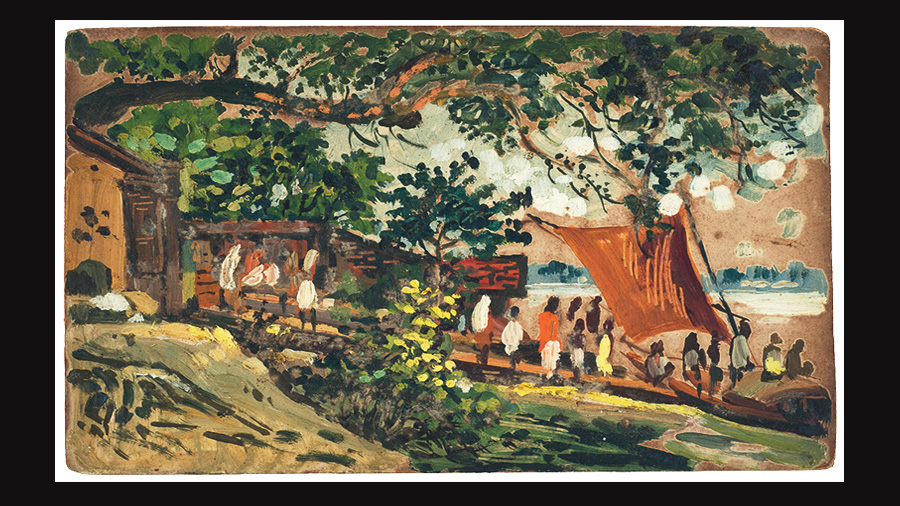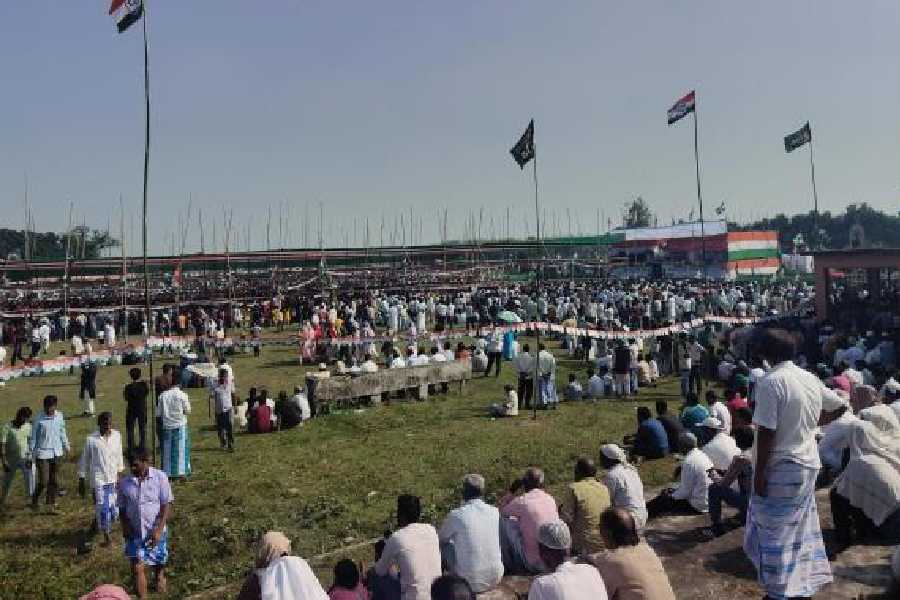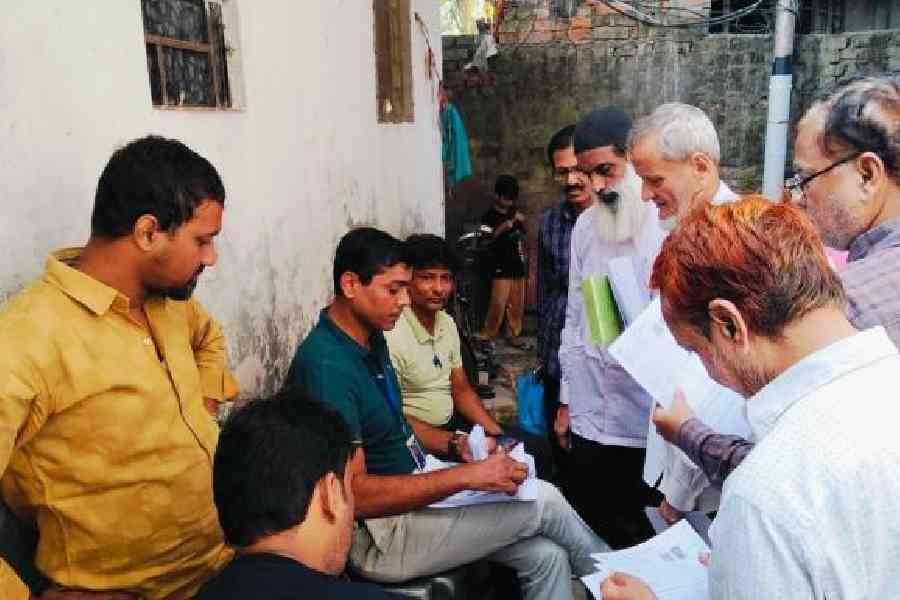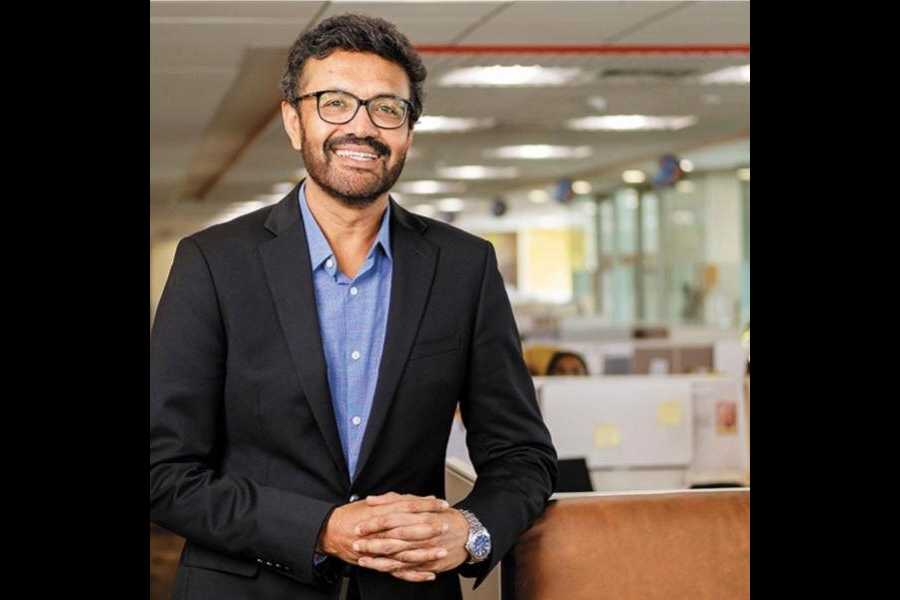Among those artists who should be remembered as important crusaders of modernism in its early years in Bengal but are often not was Ramendranath Chakravorty (1902-1955). Particularly because his tenure as principal of the Government College of Art and Craft was a significant one. But then slopes don’t hold the sun the way peaks do. And this was, indeed, a time of towering pioneers: the Tagores, Nandalal Bose, Jamini Roy, followed by two remarkable contemporaries of Chakravorty, Binode Behari Mukherjee and Ramkinkar Baij.
Chakravorty’s undoubted talent was boosted by a searching eye and a mind eager to learn. He embraced different perspectives from different teachers and different environments and experimented with print-making vocabularies and techniques, ever open to exploring new paths. Yet, there’s an ironic query that must be addressed. Could it be that this approach, this restless striving after eclectic exploration had remained exactly that, explorations, without an arrival? Of course, early death, at age 53, makes it difficult to predict whether the best was yet to be. Perhaps researchers and scholars can shed light on what might have been. But it does seem that, engaging as the prints are, they don’t indicate any distinctive vision as is noticeable in the prints of his junior contemporaries, some his students, in the following decades. Krishna Reddy, who passed out from Visva Bharati, was the most remarkable, but Somnath Hore, Sanat Kar and Lalu Prasad Shaw, alumni of the Government College of Art and Craft, are also names that come up readily in this context.
A tribute to this forgotten pioneer was paid by Charubasona in an important show of his paintings and prints that was on view till April 18. Important and troublesome because, like most artists of his generation, proper documentation hadn’t been done. Works were often not signed; nor, therefore, were dates noted down; tracking down collectors and coaxing them to lend from their collection proved another big challenge. Since no significant initiative has been made to bring early Bengal modernism into one representative permanent collection, efforts to focus on the less famous remain a tall task.
Chakravorty’s skill in draughtsmanship is seen in his pencil and conte portraits and studio studies. The drawing to cite is that of a group, depicted with care. Coming to his paintings, you find that there’s just one watercolour that records the influence of his teachers, Abanindranath Tagore and Asit Haldar. There are three in gouache on paper that are not only undated, but two of which are unsigned. They seem, logically, to belong to the 1930s when he had moved away from Bengal School stylization and was soaking up stimuli from the reality around. His quick, staccato daubs recognize the sketchiness that firm lines must melt into when reality is fluid, shifting.
The artist’s creative energy was, of course, claimed primarily by print-making: woodcut, wood engraving, linocut, lithography, etching, drypoint, aquatint. It is said that he was quite taken with Hokusai while in Santiniketan. However, there’s no perceptible influence of the Japanese master’s dynamic fluency in the prints presented. Among the woodcuts, the print that stands out for its approximation to an expressionist, unmistakably European temper is A Street Scene (1931) with its solid blocks of black. It would be worthwhile to find out if there are more in this series.Another is the quaintly picturesque Almora. In his lithos and etchings, a delicate, atmospheric texture is often evoked, as seen, for example, in Paris, cloaked in brooding shadows.
The exhibition catalogue, valuable for art lovers, is made more memorable because of Chakravorty’s own writing. He was, clearly, as articulate with the pen as he was with the burin.











